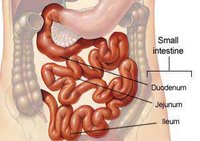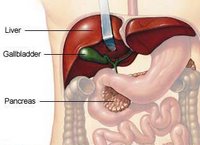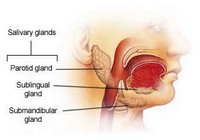Selah
It's been a while since I've posted quite a long few years ago.
But here I am about to share the new idea of what's true health is...
Personally, A 'Healthy Lifestyle' is not always merely said about taking care of health in physically (even it's obviously necessary). But actually it is the way we are thinking makes us become healthy! Well that's obviously not a merely quote, but it really happen! :)
Well here it is from now on!
The question is... What makes you happy? ...or I'll correct a li'l bit...how about joyful? Because nothing from the outside could do if you always take a "decision" that you will stay joyful from the inside no matter the situation is. But if happy? It keeps change depends seasons. There's a proverb says "A cheerful heart makes good medicine, but a crushed spirit dries up the bones." And yes it's true! I'm not naive to know about 'oh how's my blog doin meanwhile I don't even bother to update anymore? There you go I've just revealed a secret that I won't ever know that this blog has readers or not. So why bother?'
Here it is! Situation is like Seasons... It will keep change as long as we live in this world. So what do we do will show that no matter the season is, we should always prepare for the worst and face it with cheerful + courage. If we decide to live joyfully, our body might be react the contrary and it's really not comforting...and I knew it means we are expanding our heart's capacity. But it's good because our body keep adapt with our every single mind decision and we are staying healthy even we don't realize it.
Ok then. Will try to keep up soon!
Healthy digestion

The types of food you eat, the amount of exercise you get, the pace of your day and your level of stress all can affect the health of your digestive system. Good lifestyle habits can go a long way toward keeping your digestive system on track:
- Practice good eating habits.
- Maintain healthy weight.
- Get regular exercise.
- Control stress.
- Limit alcohol and tobacco.
- Use medications cautiously.
Large intestine

As this residue passes through the colon, your body absorbs nearly all of the water, leaving a usually soft but formed substance called stool. Muscles in the wall of your colon separate the waste into small segments that are pushed into your lower colon and rectum. As the rectal walls are stretched, they signal need for a bowel movement.
When the sphincter muscles in your anus relax, the rectal walls contract to increase pressure. Sometimes you have to use your abdominal muscles, which press on the outside of the colon and rectum. These coordinated muscle contractions expel the stool.
Small intestine

When bile and pancreatic digestive juices mix with other juices secreted by the wall of your small intestine, digestion shifts into high gear. What was once apple pie is propelled into the second portion of your small intestine, the jejunum. Here it's further broken down into smaller molecules of nutrients that can be absorbed. Then it slides into the final and longest portion of your small intestine — the ileum — where virtually all of the remaining nutrients are absorbed through the lining of the ileum's wall.
What remains at the end of the ileum is a combination of water, electrolytes — such as sodium and chloride — and waste products, such as plant fiber and dead cells shed from the lining of your digestive tract.
Pancreas, liver and gallbladder

In your duodenum, digestion continues, as chyme from the stomach mixes with a variety of digestive juices from your pancreas, liver and gallbladder:
- Pancreas. The pancreas produces digestive enzymes that help break down proteins, carbohydrates, and fats. It also produces the hormones insulin and glucagon, which help regulate the level of sugar (glucose) in your blood.
- Liver. The liver performs more than 500 functions, including storing nutrients, filtering and processing chemicals in food, and producing bile, a solution that helps digest fats and eliminate waste products.
- Gallbladder. The gallbladder stores and concentrates bile. As fatty food enters the upper portion of your small intestine (the duodenum), the gallbladder contracts and releases bile into the small intestine through a duct.
Stomach

After entering your stomach, the pie soon becomes unrecognizable. The stomach's wall, lined with three layers of powerful muscles, begins churning and mixing it into smaller and smaller pieces. Gastric juices, rich in acid and enzymes, pour out of glands that line your stomach. The acid and enzymes help break down food into a thick, creamy fluid called chyme.
Once the concoction is well mixed, waves of muscle contractions propel it through the pyloric valve and into the first section of your small intestine (duodenum). The pyloric valve releases less than an eighth of an ounce of chyme at a time. The rest is held back for more mixing.
Esophagus

As you swallow that last bite of pie, muscles in your mouth and throat propel it to your upper esophagus, the tube that connects your throat to your stomach. In the wall of your esophagus, muscles create synchronized waves — one after another — that propel the pie into your stomach. In this process, called peristalsis, muscles behind the bolus of pie contract, squeezing it forward, while muscles ahead of it relax, allowing it to advance without resistance.
When the bolus reaches the lower end of your esophagus, pressure from the food signals a muscular valve — the lower esophageal sphincter — to open and let it enter your stomach.
Mouth and salivary glands

After you take your first bite of pie, your salivary glands produce enough digestive juices (saliva) to begin breaking it down chemically. Besides the salivary glands in the lining of your mouth, you have three pairs of larger salivary glands — the parotid glands, sublingual glands and the submandibular glands. Together they produce 1 to 3 pints of saliva a day.
Not all of the work is chemical, though. As you savor the sweet apple tang, your teeth work to grind the pie while your tongue mixes it with saliva. This combination transforms it into a bolus — a soft, moist, rounded mass suitable for swallowing.







